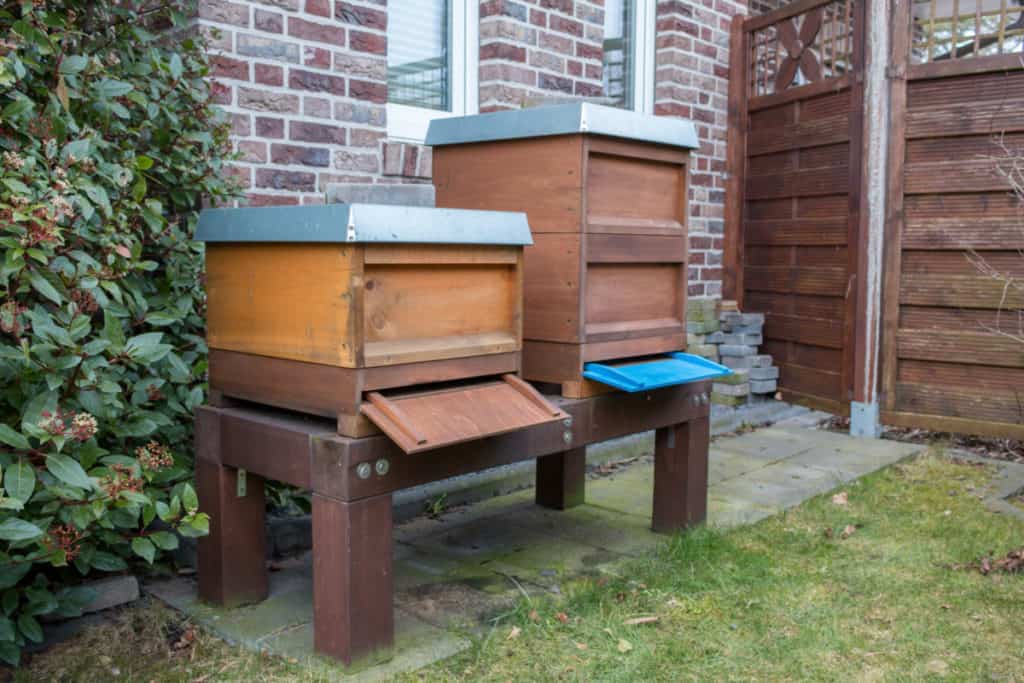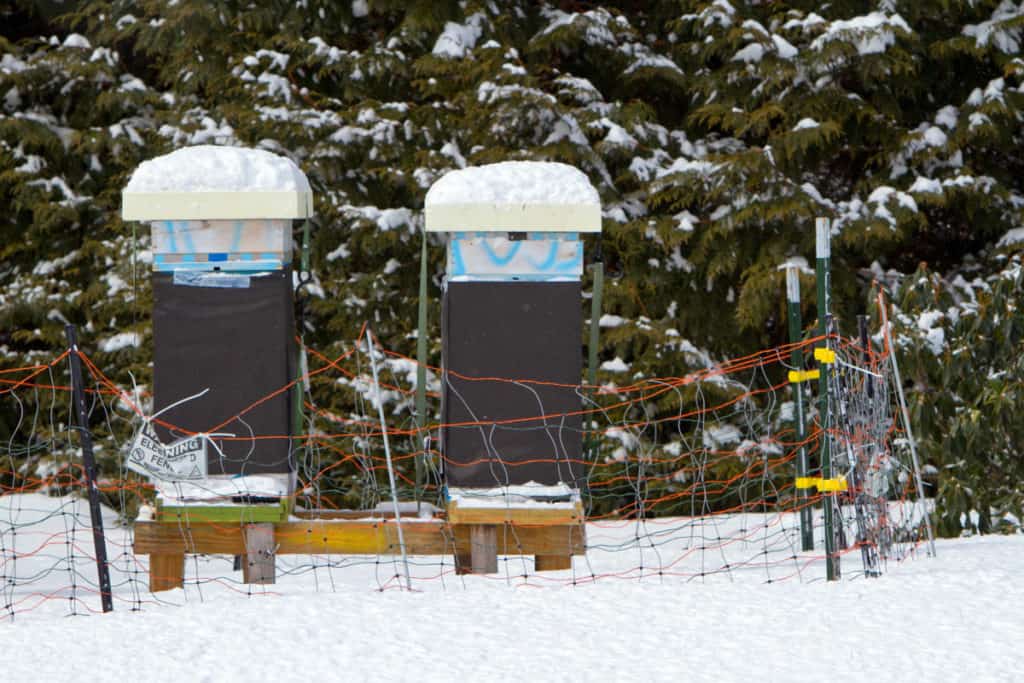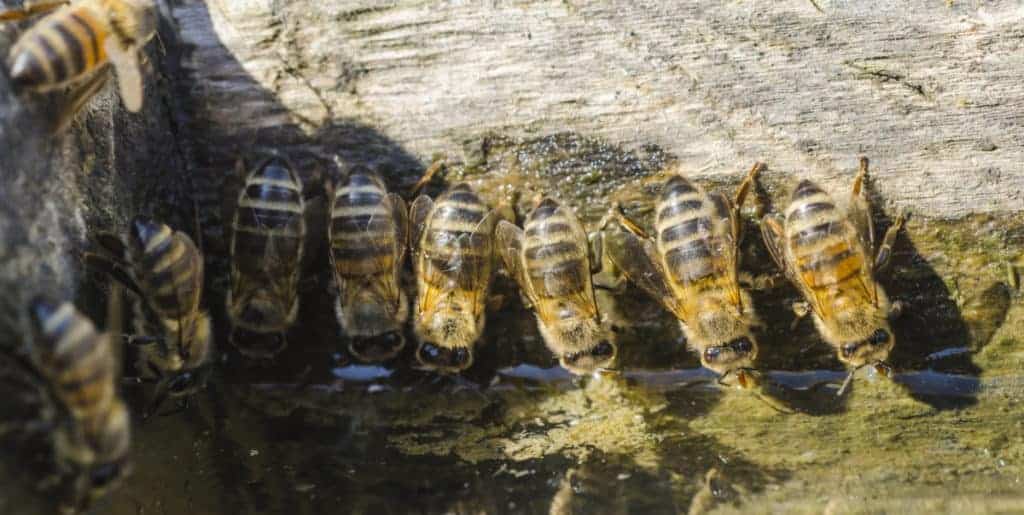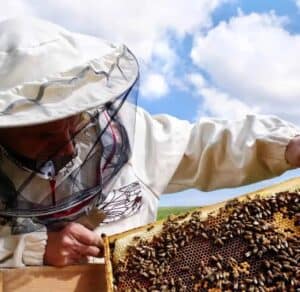How Close Can Beehives Be To Each Other? Will This Reduce Drift?
A common topic discussed by new and experienced beekeepers is how close beehives should be located. Like everything in beekeeping your local conditions and experience will ultimately determine where you land on this topic.
So, how close should you place your beehives to each other? It is recommended to place your hives at least two feet apart. This is no hard and fast rule, but it does make it easier for inspecting your hives and if you agitate one hive, you’re less likely to agitate the other hives if they’re not located close together.
Beekeepers will offer various opinions for and against having your hives close together. For some it works great but others they notice they have drifting issues. I’ll explain in more detail why in most cases it’s a good idea to space out your hives a little bit.
Is There An Ideal Distance Between Beehive Colonies

Most commercial operations for honey production will have two to four hives per single pallet but the pallets themselves will be several feet apart. Whereas beekeepers who raise bees for pollination, migratory beekeepers, will place whole pallets of bees in fields and orchards and the bees find their way home.
It is also common, especially in Europe, to see mobile bee houses where hives are stacked side by side and then moved from field to field for foraging.
Often the distance between hives, especially for the hobbyist, is determined by the comfort level of the beekeeper. You also don’t want to be walking 100 feet between hives when your trying to work your bees.
It is recommended, as a new beekeeper, to place your hives at least 2 feet apart to begin and then you can decide for yourself. Giving some distance between hives does reduce the chance of making other colonies defensive when one gets upset with you during an inspection.
Regarding drifting, some beekeepers due believe that keeping your hives at least two feet apart will reduce the drifting affect. It is commonly believed that bees tend to drift to the hives on the end leaving the end hives with more bees than the middle hives.
Most beekeepers don’t believe that this form of drifting is a large issue and don’t really care about the distance between their hives. They’re only concern is locating the hives in an optimal location for honey production and in a manner that makes it easier to work their bees.
It is more common for bees to be blown off course by winds and then enter the wrong hive. If the bee does go into the wrong hive she will be killed by the bees in that hive. Although, if the drifting bee is carrying pollen or nectar then the hive bees will accept her since they know she isn’t there to steal resources.
Also, if you move the entrance to a hive over six inches after the bees have left the hive, they may have difficulty to find her way back into their hive.
But, like everything in beekeeping your mileage may vary. It really depends on what your trying to achieve with your beekeeping efforts. Your best option is to speak with local beekeepers to get some guidance on how they are placing their hives and the distance between them.
How Close Can Beehives Be To A House

It is wise to use good judgement in deciding how close you want beehives located near your home. Your bees require at least six feet of distance to gain six feet of altitude. You’ll want enough space between your house and the hives to allow the bees to fly in any direction.
This will give them enough space to get the altitude they need without having to fly straight up and over your home. Bees will fly miles from the hive to find nectar, but its better to offer then a clear flight path.
Also, you don’t want your bees trying to get into your house looking for food. Bees will look for the closest place to forage and you don’t want that to be in your house or especially your neighbors. You may love bees, but your family and neighbors won’t appreciate them invading their homes.
It is a best practice, and common sense, to keep your bees away from people, especially children and any pets. Your bees will be flying around six to seven feet from the hive continually. You must consider children running and playing near your house or any neighboring houses.
They could inadvertently make the bees feel threatened and they could sting the children and anyone else nearby. This is an obvious safety concern, you need to minimize the risk towards your family, children, other people, and pets in the area.
On the practical side, when your harvesting honey you want most of your equipment close to the hives. Most beekeepers will have a shed on their property to store all of their equipment. it would make more sense to have the hives closer to the shed where all your equipment is. You don’t want to be carrying honey boxes to far if it can be helped, it’s already backbreaking work without that.
There are also the obvious legal issues of where your even allowed to locate your hives. Make sure to familiarize yourself with local laws regarding beehives. You may not be allowed to have a beehive in your backyard depending on the size of your property and where you live. Your best to speak with local beekeepers and associations to clarify any potential issues.
What Is The Best Location To Place Your Beehives

There are 7 important factors when deciding on the location and direction to setup your Apiary.
- No Direct Wind – a strong wind directed at the entrance, especially in colder climates, will directly impact the well-being of your bees.
- Clear Flight Path – bees require a clear path to their foraging areas.
- Lots of Sun – it is ideal to face them in the most convenient direction to get full sunlight all day. Now this is dependent on your local climate conditions. In warmer regions you may need to have your hives shaded in the afternoon to prevent overheating.
- Good Drainage – you don’t want your beehive to get flooded. Place your beehive in a flat, dry location, avoiding all flood plains.
- Not in Public View – keep your hives away from people and any form of visiting traffic.
- Predators – you need to be aware of any predators in your area such as skunks or bears.
- Protect Against Theft – beekeeping is expensive and yes, some people will steal your bees and equipment. It happens way to often.
How Close Should Bees Be To A Water Source

It is surprising how much water bees require in hot weather. A colony can use up to 1 gallon (4 liters) of water on a hot summer day. Make sure your bees have access to a good water source within a quarter mile. They will fly up to a 1/4 mile for water, but bees will go to the closest water supply.
It is believed that bees find their water source by scent rather than sight, so a water source with a smell maybe more attractive. Water that smells like wet earth, moss or even chlorine has a better chance of attracting bees.
If the closest water source is your neighbors pool, backyard pond or birdbath then it would be prudent to provide your own bee watering station. Your neighbors will get pretty upset if they have a constant line of honeybees drinking in their backyard pool or birdbaths.
Depending on the number of hives, you can put out a simple saucer filled with water and marbles or stones for the bees to land on. Some beekeepers will place a bucket of water with floats on the top, such as sticks, corks, and branches.
While others will make use of their own small backyard ponds, hummingbird feeders, and even bird baths with stones or marbles in them. The ideal source is a small creek or stream on your property for your bees.
In short, you need to ensure your bees have a good daily water source and you cannot let it dry up. They are your bees and they are your responsibility.
Related Questions
What is the best direction to face a beehive entrance? Bees do not care what direction their hive is facing. Bees in the wild have not demonstrated a statistical preference when choosing one direction for the front of their hives. Bees are flexible and will adjust to their environment.
How high off the ground should my beehives be? Place your beehives a minimum of 4-6 inches off the ground. Most beekeepers place their hives on wooden pallets. Pallets can handle the weight of multiple boxes and keep your bottom board from sinking into the ground. This is especially important during the honey flow.
How many bees does it take to pollinate an acre of land? It will take approximately 30,000 bees to pollinate an acre of fruit trees. The value of pollinating fruits, crops, and vegetables is almost 20 times the value of the honey that is produced.

Joseph Davis
My goal is to show that anyone can take up beekeeping and it can be a very rewarding hobby. I strive to share my experiences and answer any questions you may have.
